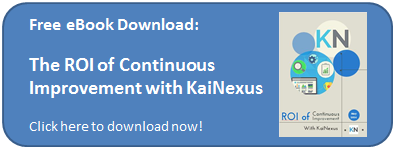 At the heart of the Six Sigma business management philosophy is DMAIC (pronounced "de-may-ick"). DMAIC is an acronym for Define, Measure, Analyze, Improve, and Control. The approach is used to improve business processes and it results in reduced waste, higher quality, and an accelerated value stream. While closely associated with Six Sigma, DMAIC can be used effectively with or without embracing the overarching Six Sigma methodology. Here’s a closer look at each of the steps.
At the heart of the Six Sigma business management philosophy is DMAIC (pronounced "de-may-ick"). DMAIC is an acronym for Define, Measure, Analyze, Improve, and Control. The approach is used to improve business processes and it results in reduced waste, higher quality, and an accelerated value stream. While closely associated with Six Sigma, DMAIC can be used effectively with or without embracing the overarching Six Sigma methodology. Here’s a closer look at each of the steps.
Step 1 – Define
The process begins with describing the business problem in as much detail as possible. It is important that the business impact and significance of the problem are clearly articulated. The internal and/or external customers involved are also documented along with the target processes or business units. Once this is accomplished, a project charter that defines the boundaries and scope of the initiative can be established. Resources are assigned and a time line for the project is set.
Step 2 – Measure
In order to judge the success of a DMAIC effort, teams must establish a baseline for the current state of the process. Objective measurements must be identified that can be used to contrast the current state with the post-improvement result. The establishment of quantifiable key performance indicators that can be accurately measured over time is essential to the success of the effort. The team must also come to agreement on who will conduct the measurements, as well as how often data will be collected and reported.
Step 3 – Analyze
Once the baseline data is gathered, it can be analyzed in search of the root causes of the business problem. When possible, data should be visualized to bring clarity to problems. Consensus is built around the most critical issues and priorities are assigned to each opportunity for improvement. Value stream mapping, or other types of process maps can be particularly helpful.
Step 4 - Improve
The analysis should lead the team to some recommendations for improvement. It is important to consider all possible positive changes. Often, improvement teams extend the opportunity to provide feedback and validation to other stakeholders as well. Once an agreement is reached, a plan for improvement is developed. The team should also document the risks of the plan and any proposed mitigation.
Step 5 – Control
Once improvements have been implemented and measurable results achieved, the control step starts so that the improvements can be maintained over time. The improvement must be documented and monitored to prevent entropy. It is also time to evaluate whether the improvement might be applied to other processes or parts of the company.
The DMAIC approach brings structure to the management of opportunities for improvement and gives leaders a reliable, repeatable methodology. Once organizations are comfortable with the process, they can confidently address the inefficiencies, errors, communication misfires and other problems that slow business momentum.



Add a Comment